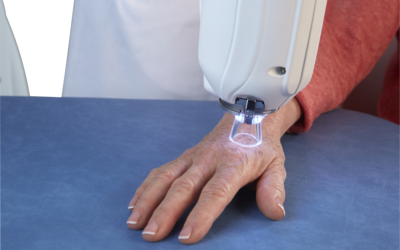BACKGROUND:
Although repeat radiation treatment has been shown to palliate pain in patients with bone metastases from multiple primary origin sites, data for the best possible dose fractionation schedules are lacking. We aimed to assess two dose fractionation schedules in patients with painful bone metastases needing repeat radiation therapy.
METHODS:
We did a multicentre, non-blinded, randomised, controlled trial in nine countries worldwide. We enrolled patients 18 years or older who had radiologically confirmed, painful (ie, pain measured as ≥2 points using the Brief Pain Inventory) bone metastases, had received previous radiation therapy, and were taking a stable dose and schedule of pain-relieving drugs (if prescribed). Patients were randomly assigned (1:1) to receive either 8 Gy in a single fraction or 20 Gy in multiple fractions by a central computer-generated allocation sequence using dynamic minimisation to conceal assignment, stratified by previous radiation fraction schedule, response to initial radiation, and treatment centre. Patients, caregivers, and investigators were not masked to treatment allocation. The primary endpoint was overall pain response at 2 months, which was defined as the sum of complete and partial pain responses to treatment, assessed using both Brief Pain Inventory scores and changes in analgesic consumption. Analysis was done by intention to treat. This study is registered with ClinicalTrials.gov, number NCT00080912.
FINDINGS:
Between Jan 7, 2004, and May 24, 2012, we randomly assigned 425 patients to each treatment group. 19 (4%) patients in the 8 Gy group and 12 (3%) in the 20 Gy group were found to be ineligible after randomisation, and 140 (33%) and 132 (31%) patients, respectively, were not assessable at 2 months and were counted as missing data in the intention-to-treat analysis. In the intention-to-treat population, 118 (28%) patients allocated to 8 Gy treatment and 135 (32%) allocated to 20 Gy treatment had an overall pain response to treatment (p=0·21; response difference of 4·00% [upper limit of the 95% CI 9·2, less than the prespecified non-inferiority margin of 10%]). In the per-protocol population, 116 (45%) of 258 patients and 134 (51%) of 263 patients, respectively, had an overall pain response to treatment (p=0·17; response difference 6·00% [upper limit of the 95% CI 13·2, greater than the prespecified non-inferiority margin of 10%]). The most frequently reported acute radiation-related toxicities at 14 days were lack of appetite (201 [56%] of 358 assessable patients who received 8 Gy vs 229 [66%] of 349 assessable patients who received 20 Gy; p=0·011) and diarrhoea (81 [23%] of 357 vs 108 [31%] of 349; p=0·018). Pathological fractures occurred in 30 (7%) of 425 patients assigned to 8 Gy and 20 (5%) of 425 assigned to 20 Gy (odds ratio [OR] 1·54, 95% CI 0·85–2·75; p=0·15), and spinal cord or cauda equina compressions were reported in seven (2%) of 425 versus two (<1%) of 425, respectively (OR 3·54, 95% CI 0·73–17·15; p=0·094).
INTERPRETATION:
In patients with painful bone metastases requiring repeat radiation therapy, treatment with 8 Gy in a single fraction seems to be non-inferior and less toxic than 20 Gy in multiple fractions; however, as findings were not robust in a per-protocol analysis, trade-offs between efficacy and toxicity might exist.
FUNDING:
Canadian Cancer Society Research Institute, US National Cancer Institute, Cancer Council Australia, Royal Adelaide Hospital, Dutch Cancer Society, and Assistance Publique-Hôpitaux de Paris.
Dr Prof Edward Chow, MBBS, Yvette M van der Linden, MD, Prof Daniel Roos, MD, William F Hartsell, MD, Prof Peter Hoskin, MD, Jackson S Y Wu, MD, Prof Michael D Brundage, MD, Abdenour Nabid, MD, Caroline J A Tissing-Tan, MD, Bing Oei, MD, Scott Babington, MBChB, Prof William F Demas, MD, Carolyn F Wilson, MSc, Prof Ralph M Meyer, MD, Bingshu E Chen, PhD & Prof Rebecca K S Wong, MBChB.






